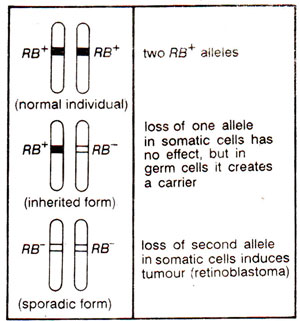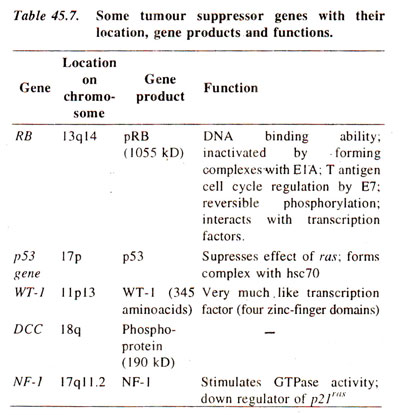Tumour suppressor genes or anti-oncogenes
The formation of cancerous tissues'is regulated by growth promoting proto-oncogenes, which are counter balanced by growth suppressing genes called 'tumour suppressor genes'. The growth lesions, that inactivate suppressor genes, liberate the cells from the constraints imposed by these genes, yielding the unconstrained growth of the
cancer cells. It is possible that activation of proto-oncogenes and inactivation of tumour suppressor genes, both are responsible for the progression of many tumours to full malignancy. Atleast six of these tumour suppressor genes have been isolated as molecular clones and these genes will be subjected to intensive investigation in 1990's.
The evidence about the presence of tumour suppressor genes came from the following types of experiments : (i) Somatic cell hybridization, where fusion of tumour cells with normal cells always gave non-tumorigenic hybrid cells, suggestion that the normal cells donated the tumour suppressor genes, (ii) In patients suffering with retinoblastoma (RB), tumour on the retina in children, was associated with deletion of band ql4 of chromosome 13. RB gene was later associated with 13q14, and retinoblastoma involved inactivation or deletion of both copies of RB gene (Fig. 45.7).
Some of the tumour suppressor genes include RB gene, p53 gene, WT-1 gene, erb-A gene, DCC genfi and NF-1 gene. Their characteristics are summarized in Table 45.7.
Some of the tumour suppressor genes include RB gene, p53 gene, WT-1 gene, erb-A gene, DCC genfi and NF-1 gene. Their characteristics are summarized in Table 45.7.






